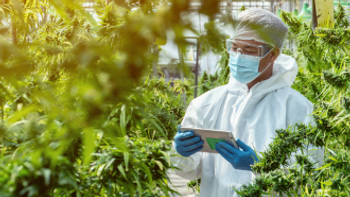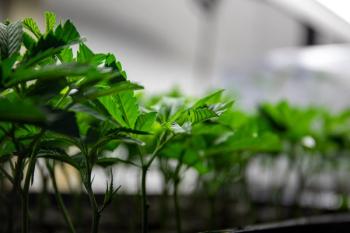
Cannabis Science and Technology
- May 2020
- Volume 3
- Issue 4
Best Practices for Pesticide Use in Your Cultivation Facility

Todd Statzer, the Vice President of Environmental Sciences at urban-gro, offers some tips for pesticide use in cannabis cultivation.
Todd Statzer, Director of Environmental Sciences at urban-gro, discusses some best practices for pesticide use in cannabis cultivation.
The subject of pesticides can be especially troubling as cultivators navigate through each state’s list of banned products, testing requirements, and other stringent laws geared towards consumer safety. Whether you are a seasoned cultivator or just starting out, the tips and best practices offered here by Todd Statzer, the Vice President of Environmental Sciences at urban-gro, are sure to help get you on solid ground.
What do cannabis pesticides expert want people to know about the vaping crisis?
Todd Statzer: We believe the vaping crisis was caused by the purchase of illicit products. These illegal products are commonly produced by unregistered growers, black market growers, and imported to the US. Unregistered growers are producing products that do not adhere to any kind of regulatory guidelines towards pesticides use. Some of these pesticides are lethal when used on cannabis. Safe products can only be purchased from a registered dispensary that’s procuring their flower or concentrates from registered cultivation facilities that have regular standardized product testing.
What’s the biggest misconception regarding cannabis and pesticides you’ve come across and how to do you address it?
Statzer: Cannabis is very regulated and there are a very narrow number of products allowed in cannabis depending on what state you’re operating and in what stage of plant growth. Simply using the same pesticides one would use for other crops, such as corn or soybeans, will most certainly lead to a recall because of regulatory testing.
Properly registered cultivators rely on systems such as integrated pest management (IPM) to deliver the appropriate amount of chemicals at the correct time. The goal is to apply the chemicals exactly when needed, which avoids over application, as well as adhering to the producer’s state regulations.
Additionally, many do not understand that a cultivator’s IPM program may utilize beneficial insects as a part of the program. Even in the total absence of chemicals, beneficial insects can be predators that eat a target insect or parasitic (for example, laying an egg in the host) that kills the target pest as a food source.
To conclude, the cultivation of cannabis is highly regulated: there are a limited selection of registered pesticides, the timing applications change from state to state depending on regulatory testing, as well as using beneficial insects in combination with the use of pesticides. By using a true IPM program, cultivators are using proactive pest controls such as beneficial insects as well as rotating proactive and reactive chemical applications.
What can cannabis cultivators do to ensure clean and safe products for human consumption?
Statzer: Primarily, following state guidelines, and ensuring compliance within your state. Additionally, cultivators need to use the best greenhouse practices that utilize cultural controls, mechanical control, and properly designed facilities. Each state has different guidelines for their rules and regulations that dictate what can and can’t be used. For example, some states do not allow the use of chemicals on flower so therefore cultural and mechanical controls become more important as well as the use of beneficial insects. The best way to create the cleanest and safest products is to follow state guidelines, good greenhouse practices, and a compliant IPM program.
What role do IPM programs play in pest control?
Statzer: When thinking about an IPM program, think about using the tools in the toolbox. By that, “the tools” include cultural and mechanical controls, compliant and organic pesticides, beneficial insects, and best greenhouse practices. These factors contribute to the success of an IPM program.
As an example of mechanical and cultural controls, cultivators must pay attention to air sanitization, air circulation, and plant spacing. For example, when treating for powdery mildew, if you don’t have proper air circulation or purification, or if the plants are too close together and not pruned properly, the likelihood of powdery mildew will persist.
Remember the key to success is attention to all systems used for cannabis production.
What kind of regulations or best practices should cannabis cultivators follow regarding pesticide use especially in states that are more lenient than others regarding banned or restricted pesticides?
Statzer: Cultivators in states with vague guidelines can turn to Colorado, Washington, or Oregon for a list of approved chemicals. This provides direction with guides for safe chemical to use, but you must inquire with your state regulators on the approved use in your state. Additionally, review your state testing requirements, which will help you to further determine which chemicals to use. It is important to remember that the product’s label is the law.
No matter how complex or lenient your state regulations may seem, maintaining compliance is your primary responsibility, and it is complicated. There are many companies that can help you to ensure you have an effective, compliant IPM program.
Are there any in-house tests that cannabis cultivators can do to check the safety of their pesticides?
Statzer: There are in-house tests, but the equipment is expensive. It’s unlikely that a 20,000-square-foot producer can afford the proper testing equipment. You also need trained operators for proper use and calibration.
At the end of the day, having your own equipment gives you a benchmark. This provides you an advantage in case there are discrepancies between your results and state results. Regardless, all states require that compliant cultivators use state certified laboratories for testing. All results must go on every product label.
How to Cite this Article
M. L’Heureux, Cannabis Science and Technology3(4), 54 (2020).
Editor's note: The version of this article that appeared in the May 2020 print issue was an excerpt of the full interview presented here.
Articles in this issue
over 5 years ago
New Extraction Technologies Lining Up to Be Game-Changersover 5 years ago
Could Automation Be the Next Big Boon to Cannabis Production?over 5 years ago
Potency Loss in Cannabis Beverages-Common Causes and Solutionsover 5 years ago
Azulenes: A Clear Sign of Cannabis Oil Contaminationover 5 years ago
CBD and Horses: Paving the Path for Future ResearchNewsletter
Unlock the latest breakthroughs in cannabis science—subscribe now to get expert insights, research, and industry updates delivered to your inbox.



